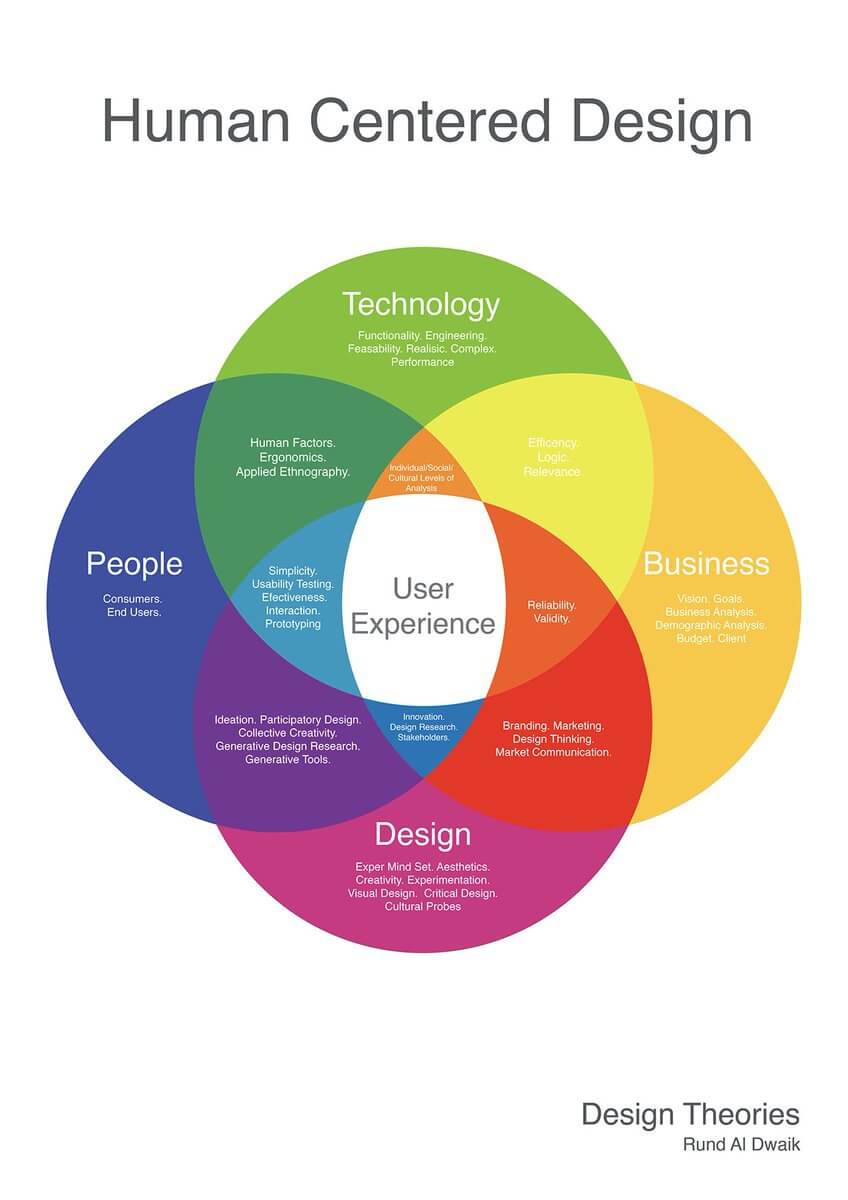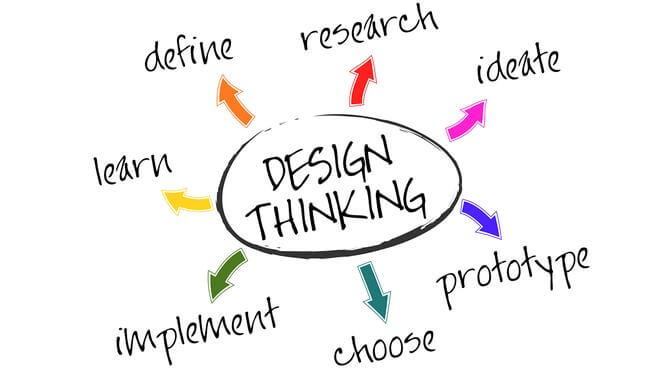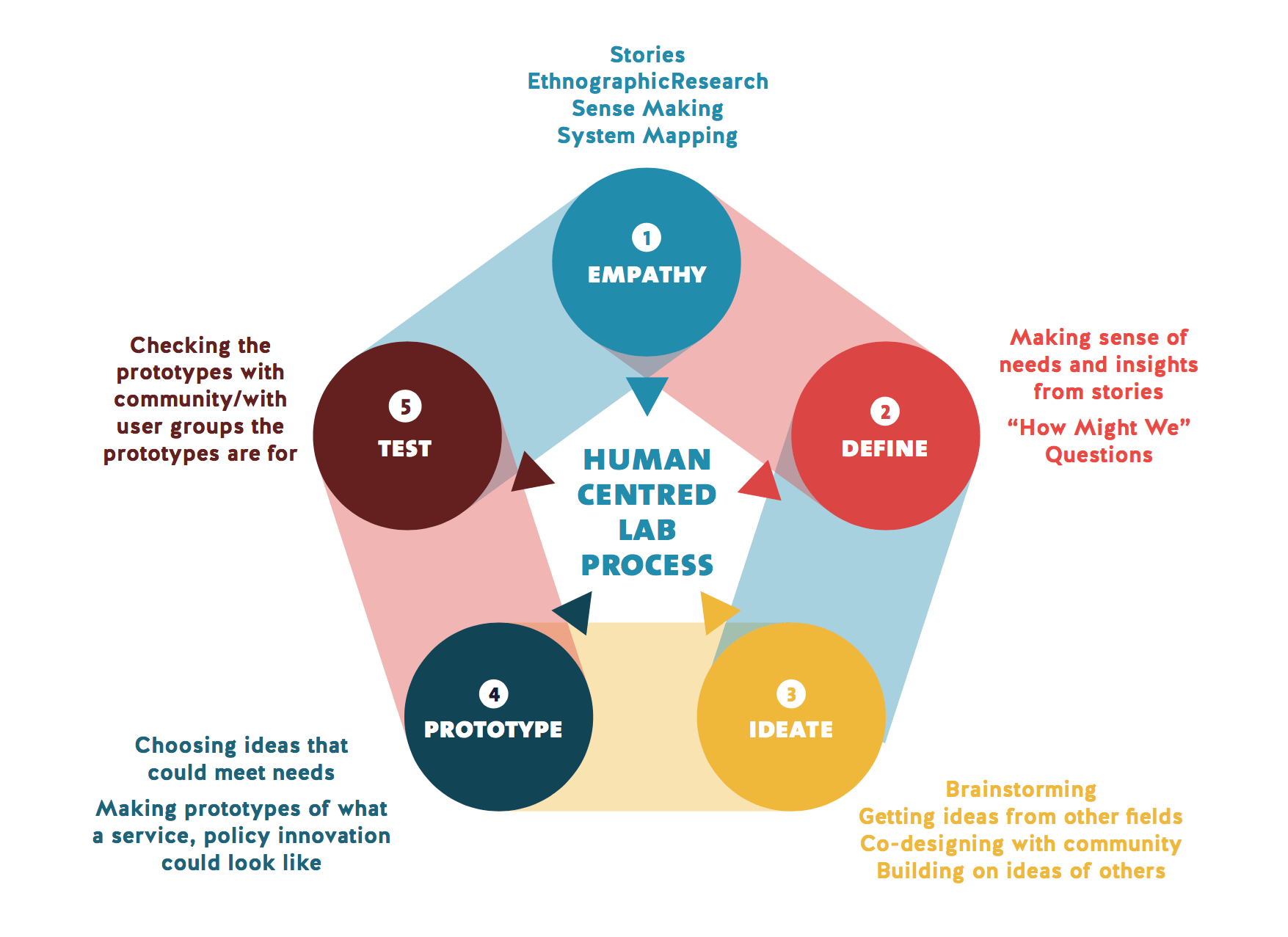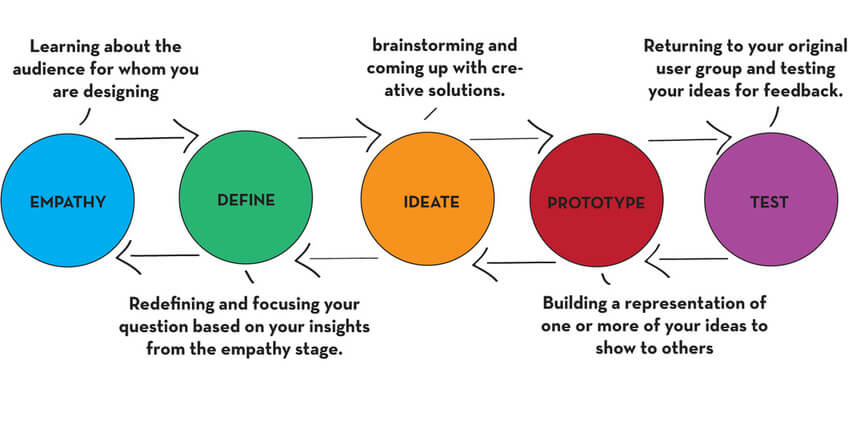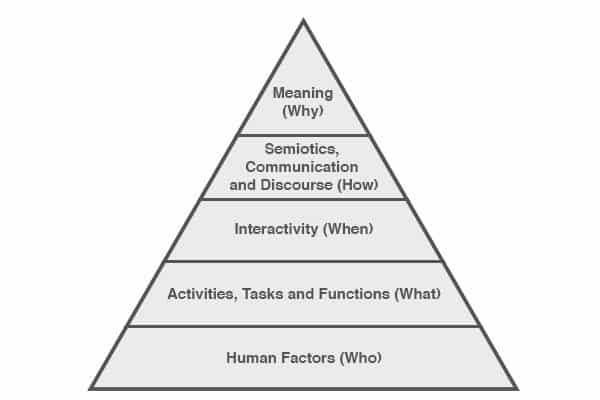Human Centred Design (HCD) is a design and management framework that develops solutions to problems by involving the human perspective in all steps of the problem-solving process. Human involvement typically takes place in observing the problem within context, brainstorming, conceptualising, developing, and implementing the solution.
Human centred design is an approach to interactive systems development that aims to make systems usable and useful by focusing on the users, their needs and requirements, and by applying human factors/ergonomics, usability knowledge, and techniques. This approach enhances effectiveness and efficiency improves human well-being, user satisfaction, accessibility and sustainability; and counteracts possible adverse effects of use on human health, safety and performance. Source: Wikipedia
- Empathising: Understanding the human needs involved.
- Defining: Re-framing and defining the problem in human-centric ways.
- Ideating: Creating many ideas in ideation sessions.
- Prototyping: Adopting a hands-on approach in prototyping.
- Testing: Developing a prototype/solution to the problem.
Empathise
The first stage of the HCD process is to gain an empathic understanding of the problem you are trying to solve. This involves consulting experts to find out more about the area of concern through observing, engaging and empathising with people to understand their experiences and motivations, as well as immersing yourself in the physical environment to have a deeper personal understanding of the issues involved.
Define the problem
During the Define stage, you put together the information you have created and gathered during the Empathise stage. You will analyse your observations and synthesise them in order to define the core problems that you and your team have identified up to this point. You should seek to define the problem as a problem statement in a human-centred manner. The Define stage will help the designers in your team gather great ideas to establish features, functions, and any other elements that will allow them to solve the problems or, at the very least, allow users to resolve issues themselves with the minimum of difficulty.
Ideate
During the third stage of the HCD process, designers are ready to start generating ideas. You’ve grown to understand your users and their needs in the Empathise stage, and you’ve analysed and synthesised your observations in the Define stage, and ended up with a human-centred problem statement. With this solid background yourself and your team members can start to ‘think outside the box’ to identify new solutions to the problem statement you’ve created, and you can start to look for alternative ways of viewing the problem.
Prototype
The design team will now produce a number of inexpensive, scaled down versions of the product or specific features found within the product, so they can investigate the problem solutions generated in the previous stage. Prototypes may be shared and tested within the team itself, in other departments, or on a small group of people outside the design team. This is an experimental phase, and the aim is to identify the best possible solution for each of the problems identified during the first three stages.
Test
Designers or evaluators rigorously test the complete product using the best solutions identified during the prototyping phase. This is the final stage of the 5 stage-model, but in an iterative process, the results generated during the testing phase are often used to redefine one or more problems and inform the understanding of the users, the conditions of use, how people think, behave, and feel, and to empathise. Even during this phase, alterations and refinements are made in order to rule out problem solutions and derive as deep an understanding of the product and its users as possible.
Original author / source: Unknown
